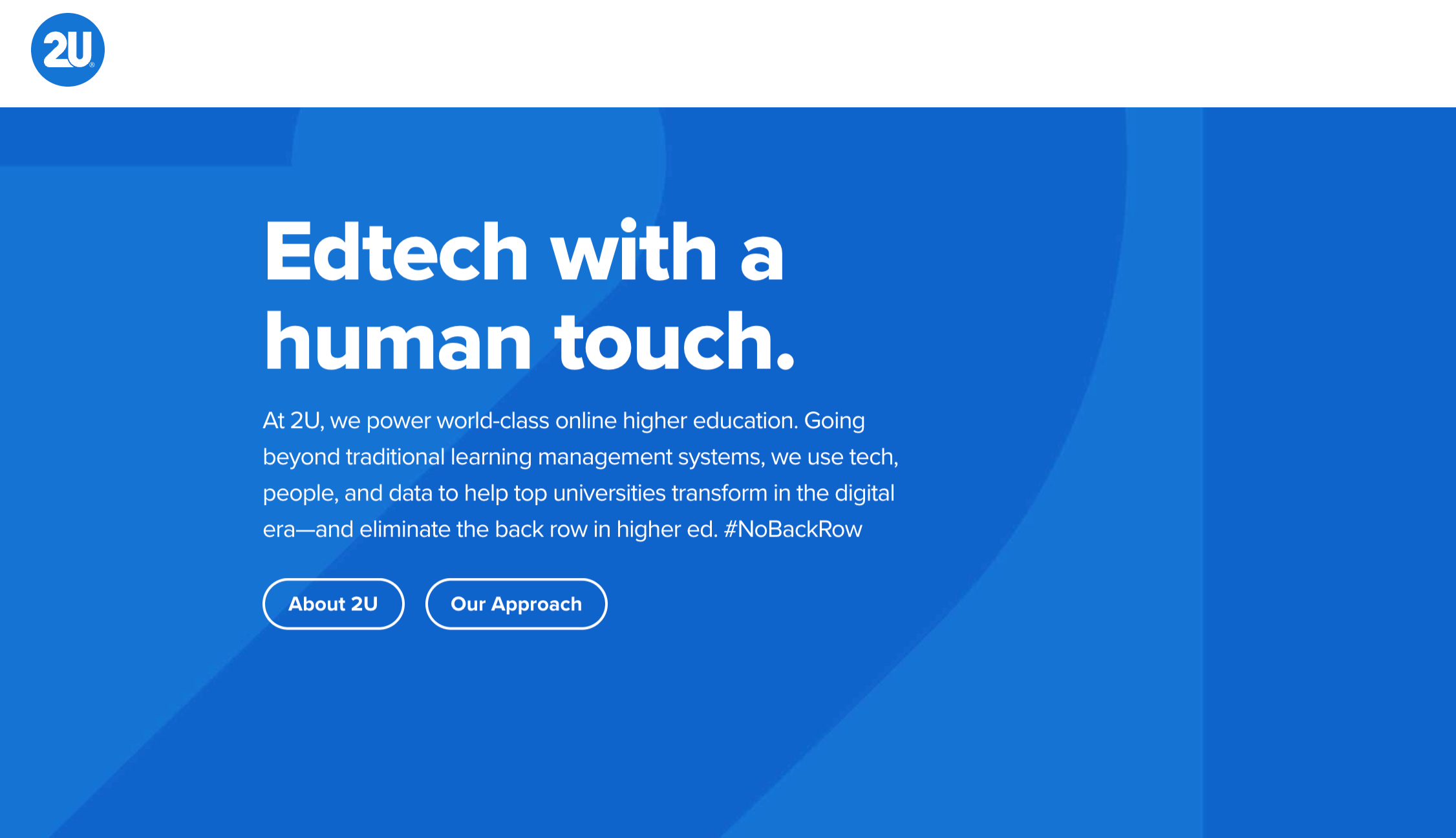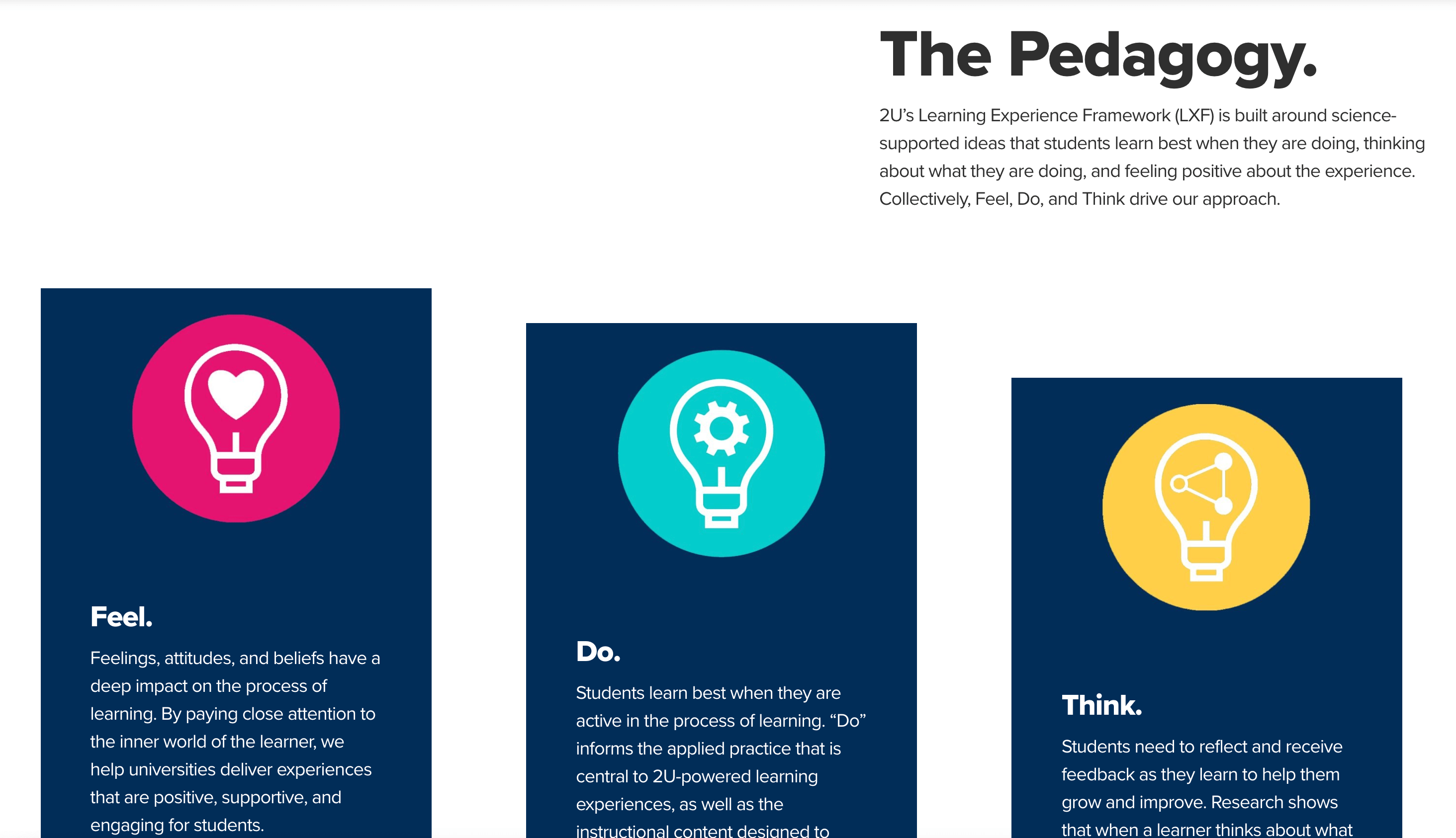SnapshotAnchor
2U, Inc. (NASDAQ: TWOU) is a global edtech (educational technology) company that contracts with non-profit colleges and universities to power online graduate and undergraduate degree programs, professional certificates, short courses, and boot camps. The company supplies its client institutions with a cloud-based SaaS (software-as-a-service) platform, coursework design, infrastructure support, capital, and more. They are a trusted edtech partner to some of the world’s top universities, like the University of Cambridge and Massachusetts Institute of Technology, helping them launch world-class digital education for over a decade.
With over 500 total offerings and 300,000+ students enrolled across all products, 2U operates a high-volume Learning Management System (LMS) empowering students at a global scale to embrace digital education.
To ensure that the metadata for all their university partners is accurate, updated, and available to students, 2U handles 100+ data points per brand (assets, configurations, etc.) that need to be reflected within the LMS itself, along with their marketing websites, course collateral, product pages, and other user-facing interfaces.
Initially, 2u managed this data using a homebrew Headless CMS for editorial and content teams. This custom CMS was built to meet the needs of a specific use case, as the projects grew and diversified the in-house system became unsustainable for a broader range of use cases. 2U needed to build a centralized content hub to house all of these assets in a single repository where they could utilize more efficient workflows, programmatic content aggregation and the power of GraphQL to build a powerful solution.
The ProcessAnchor
The headless CMS built in-house served the needs of 2U for a specific use case. As the team added several new partners and products at an accelerated pace, their system wasn’t scalable. When deciding whether to build on top of this solution further or adopt an external solution, 2U opted to go for a hosted solution and avoid “rebuilding the wheel.” The team hoped to avoid any further singular points of failure or performance issues that their CMS could encounter, to prevent spending resources away from focusing on their core business model.
2U was all in on GraphQL, and while looking for solutions to replace their CMS, they considered several combinations of Headless CMS and DAM platforms before coming across Hygraph. After an extensive proof-of-concept phase, it was apparent that Hygraph fits their needs entirely - Headless, hosted GraphQL backend, and an editor-friendly UI - and opted to go with Hygraph. Given that their business model was heavily using GraphQL, the choice was simple.
Why Hygraph?Anchor
The 2U team chose Hygraph for the following reasons.
Performant GraphQL APIsAnchor
Because of the heavy use of GraphQL in other areas of their tech stack, it was important for the 2U team that the headless CMS also had powerful GraphQL APIs. The APIs of Hygraph proved that they could perform at scale resulting in load time improvements. The increase in performance with Hygraph’ API led to higher conversion rates and lower bounce rates. Additional features such as audit logs made it easy to monitor and track any changes to the team’s content.
Security and Authentication via SSOAnchor
Security and authentication were key elements to consider during the evaluation process. The ease of implementing SSO with Hygraph and their OneLogin accounts gave the team the peace of mind they needed. Audit Logs, granular permissions, and other security measures within Hygraph demonstrated to the team that their data would be secure within Hygraph.
Intuitive UIAnchor
It was important to the team that the Content UI was simple, without sacrificing the features that the team needed. Hygraph offers a system that requires minimal onboarding for the broad range of stakeholders that would be interacting with the content within the UI.
Omni-channel distributionAnchor
The 2U team wanted to choose a stack that prepared them for their future expansion plans as well. It was important that whatever approach they chose needed to prepare them for a greater cross-platform presence. The no-code schema builder of Hygraph as well as the headless nature of the platform meant that 2U’s project could grow in the future to serve their omnichannel needs.
Given the success of moving to Hygraph and having their business goals met ahead of schedule, there are early conversations of extending their adoption of Hygraph to handle further aspects of their application content.
Results and benefitsAnchor
- Load time improvements on the frontend with Hygraph’s API serving content at high speeds.
- Hygraph’s audit logs (and with content based permissions on the way) made it easier for the team to monitor the changes and additions made to their content.
- The increase in performance with Hygraph’s API led to higher conversion rates and lower bounce rates.
- With 2U rapidly adopting a mobile-first approach and ramping up their focus on mobile, the team needed a solution to improve their cross-platform user experience.


